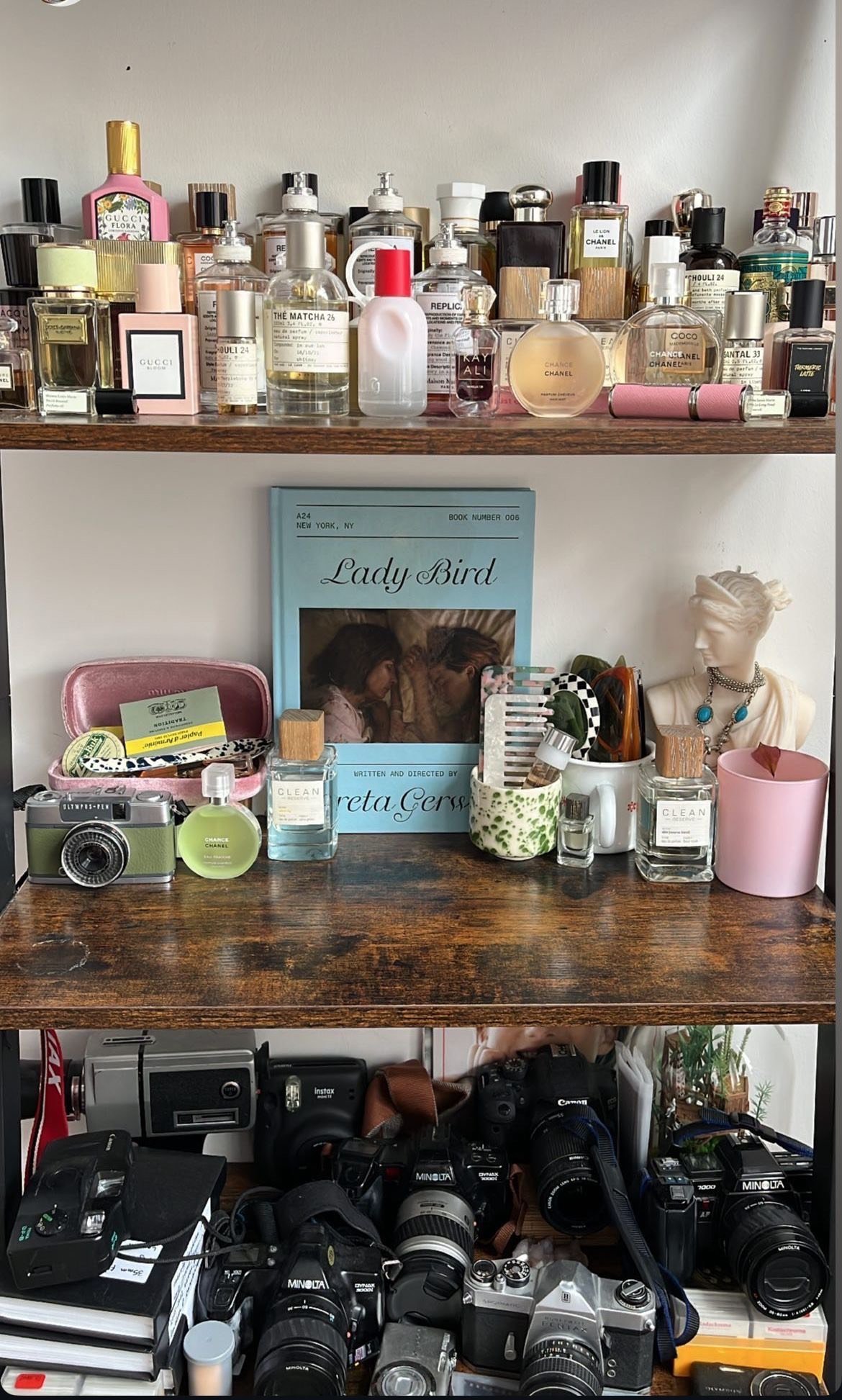Scent Profile: Perfumes, Nostalgia, and Translation
Written by Erin Norton
Image courtesy of @sophialiv_h / Pinterest
Perfumery as a profession is a job seeped in translation. Translation as a topic is much more broad than simply taking a text from one language and turning it into another. If we view translation as an adaptation or a transformation, it should be easy to see how perfumers are tasked with translating a particular memory into a scent. Take the Replica collection from Maison Martin Margiela, for example. The entire purpose of that scent collection is to take specific scenarios and turn them into a fragrance that“ replicates” said scenario. I have been a long time user of Jazz Club from that very group. A few years ago when I still lived in Vermont, very far away from any kind of jazz club, a friend gave me a sample that I used up much faster than I anticipated. Very soon afterwards, I upgraded to a full size bottle and wore it daily for years.
If the intention of many perfumes is to evoke specific memories with their aroma by translating memory into a scent, then how is it possible for a fragrances’ user to simultaneously ascribe that specific scent to a completely separate memory? For example, while the Jazz Club fragrance remains the same over the years, opening the cap to that fragrance transports me back to a family vacation in an old wooden cabin. While pulling my suitcases up the stairs to my room in the cabin, the sample vial opened in my bag, blessing my clothes with a yummy amber, tobacco scent that lasted for multiple months. Jazz Club reminds me of days spent laying on the dock and getting sunburnt while reading Normal People.
Daisy by Marc Jacobs is another scent deeply rooted in my olfactory system. Yes, it smells of white florals and blue skies, but since it’s been so long since I wore it on a daily basis, it reminds me of high school. I doused myself religiously in that scent before heading to school each morning. I don’t think I can bring myself to wear it again just because it reminds me of walking down cinder block walls and taking an SAT.
My favorite scent is an interesting case study in this concept of scent double ascriptions. Byredo is a perfume house that relies on feeling as opposed to memory. Slow Dance from Byredo is a unisex fragrance that uses a combination of opoponax, violet, cognac, and vanilla. It’s a very syrupy scent, but it holds many complexities. On my skin, I feel as though it smells cherry-like. Since I bought this fragrance for an ex of mine a few years ago, I know that the scent varies depending on its user. On his skin, it smelled more of amber and florals than it does on mine. Before I bought the full size for him, I would frequent the Byredo store on Newbury St. to pick up free samples of it. Whenever I put it on, I’m reminded of my 20th birthday dinner in a quaint North End restaurant and walking through frigid February winds to go look out at the pier. It reminds me of green corduroy and flannel pajama pants. If I could bottle up comfort, it would smell like Slow Dance. The description for the fragrance compared to my associations is interesting. Slow Dance’s perfumer, Jérôme Epinette, describes it as“ A rites-of-passage moment for both girls and boys before they metamorphose into women and men.” I adore how all encompassing the description is, yet it still remains personal to the user. I almost wonder if that is the fragrance’s intention: to be intertwined with the meaning or memory the user creates for it.
Are fragrances meant to hold multiple memories in one bottle, even if it wasn’t the perfumer’s intention? Perhaps that’s what makes perfumery so fascinating to me. The act of translation is acting on both ends. The perfumer is able to translate, to the best of their ability, a memory into scent, while that fragrance over time evolves into a completely different memory for the user. Even though I haven’t always been a self proclaimed“ fragrance girlie”, scents have always been important to me. Nothing is more moving than the ability to time travel, just by opening the cap of a fragrance bottle.

